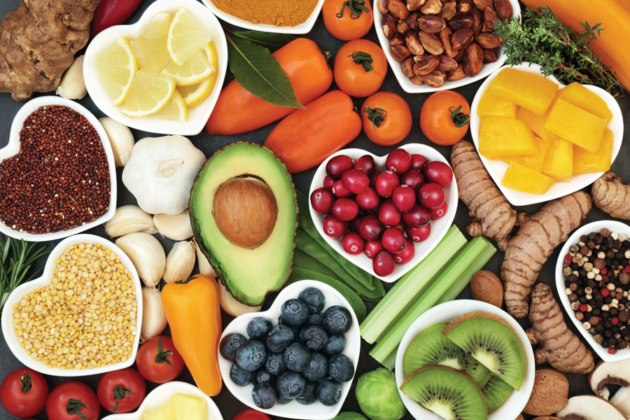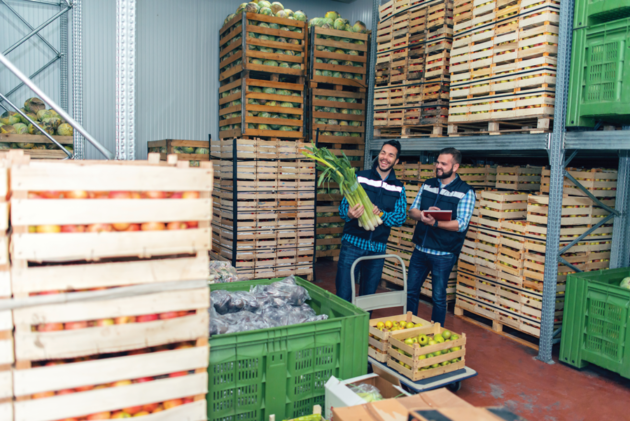
Preventing food from falling through the cracks
By Lori Nikkel
Sustainability Anthesis Provision Editor pick Enviro-Stewards food waste Nature's Touch Righteous Gelato Second Harvest Walmart FoundationHighlights from a multi-year project that helped reduce food loss in the processing sector
 Photo © marilyn barbone / Adobe Stock
Photo © marilyn barbone / Adobe Stock Ninety-five CN towers – that’s the equivalent weight of the food wasted in this country every year. It’s enough to feed everyone living in Canada for almost five months and represents a whopping 58 per cent of all food in the country.
When it comes to food waste in Canada, we have a huge problem, and issues occur all along the supply chain. Forty-seven percent of this waste occurs in processing and manufacturing. That’s why, in 2021 with a significant investment of US$510,000 funding from the Walmart Foundation, Second Harvest, Anthesis Provision and Enviro-Stewards kicked off a multi-year research project to support companies in the food processing and manufacturing sector to explore and address barriers to preventing and reducing food loss and waste, while recovering and redistributing surplus food.
A previous investment from the Walmart Foundation facilitated food loss prevention assessments at 50 food and beverage processing facilities across Canada. These assessments identified prevention measures that could avoid 9.3 million kg/yr of food loss while collectively saving the facilities $11.4 million/yr. However, the social, environmental, and economic benefits of these measures are not realized until the measures are actually implemented. Walmart Foundation’s follow-up investment enabled following up with each of the 50 original participants and provision of technical assistance to 20 facilities that had not fully implemented the recommended conservation measures.
Fast-forward two years, and this massive project has ended. In spite of COVID delays and supply chain issues, a total of 3,109,433 kg/yr of food loss and waste is now being prevented, and 100,295 kg/yr of surplus edible food is now being redirected to non-profit agencies feeding Canadians. On the surface, these numbers are encouraging but they don’t tell the whole story. When it comes to reducing and eliminating food waste, prevention at source is the goal, which is why each of these companies were supported through this program with change management training and food loss and waste goal-setting support from Anthesis Provision. Rather than disposing of food in a more environmentally friendly manner, prevention is the only option for food loss and waste that recovers the economic, environmental, and social value of the food.

Prevention is the only way to recover the economic, environmental, and social value of food. Photo © bluecinema / E+ / Getty Images
Positive outcomes
This project saw many successes. We surpassed our redistribution goal, received positive buy-in from the companies we consulted with and uncovered many unexpected sources of waste and cost savings for manufacturers.
Take for instance Righteous Gelato, a small batch gelato company and Certified B Corporation with operations in Calgary. Through the course of the work of this project, Enviro-Stewards identified three major opportunities that represented annual financial savings of $132,609, the prevention of 25.7 tonnes of greenhouse gas emissions (GHGs), and surplus food redirection to support local non-profit organizations. Efficiencies like modifying the shape and angle of holding tanks and systems for preventing residual milk and gelato loss in stainless steel transfer pipes will inform new facility design plans and help them realize these savings.
“We’re always trying to make our facility as efficient as possible and eliminate waste,” said James Oliphant, operations lead at Righteous Gelato. “This work allowed us to rethink our priorities and refocus our energy.”
Nature’s Touch, a frozen fruit manufacturer saw similar success. Through work at their production facilities in Abbotsford, B.C., and Montreal, Enviro-Stewards uncovered potential annual savings of $824,000, the prevention of 422 tonnes of GHGs and enough food to support 195,000 meals (based on calories saved) for food insecure Canadians. Similarly to Righteous Gelato, many of the recommendations were related to machinery and process—improved conveyer belt systems, bag sensors and drum machine calibration are helping prevent small fruits from falling through the cracks.
“As much as people want to believe that you can be a sustainable company without completing the conservation assessments in your supply chain, that’s not true. We were measuring losses, but without having done these quantitative assessments, we never would have gone as deep as we did,” said Deborah Wolman, VP of sustainability and revenue management at Nature’s Touch. “It changed the way we see and talk about waste. And thanks to our implementation of the work, sustainability in 2023 is a pillar for our company. It’s a license to operate; it’s not a nice to have, it’s a must have.”
Challenges
Righteous Gelato and Nature’s Touch aren’t alone, and many of the companies saw great value in this work. We did, however, also encounter many challenges along the way.
Four themes emerged as barriers to successful food loss and waste prevention for manufacturers:
- High infrastructures costs of some of the project implementation recommendations
- Lack of leadership and corporate culture of accountability
- Staff turnover and resource challenges related to the COVID-19 pandemic
- The need for a dedicated continuous improvement role
Although many of the opportunities identified for manufacturers were quick wins, a significant portion of the measures involved large capital investment and significant facility design changes. Even so, the overall payback remains under one year for implementation of food loss prevention measures (i.e. for every dollar investment, the facility would realize a net savings of $1 every year thereafter). Although there are plans in place to implement the remaining measures, the full impact of our assessments and recommendations was not realized by the close of this program. In many cases, it remains a work in progress.
As the CEO of Second Harvest, Canada’s largest food rescue organization, I am laser-focused on ensuring surplus edible food ends up on plates instead of landfills because millions of Canadians face food insecurity in their lives, and food waste is a major driver of climate change in this country. In our ideal world, there would be no waste, no hunger and, frankly, no need for Second Harvest. But change doesn’t happen overnight, and any incremental success or improvement is a step in the right direction. While this project illustrated many of the challenges faced by companies looking to prevent waste, it also underscored the importance of cross-sector collaboration and alignment on a goal. We’re not there yet, but we’re well on the way. It’s a work in progress.
Lori Nikkel is the CEO of Second Harvest.
This article was originally published in the February/March 2023 issue of Food in Canada.
Print this page